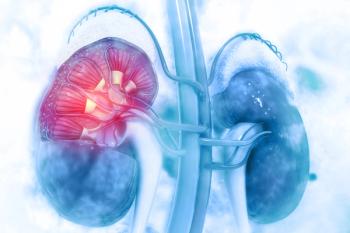
Economic Burden in Late-Stage AMD High in Patients and Caregivers in US
Key Takeaways
- Late-stage AMD imposes a significant economic burden, with productivity loss and reduced well-being as major contributors.
- The US faces the highest economic burden, with costs estimated between $9.5 billion and $136.5 billion.
Reduced well-being and loss of productivity were contributors to the high economic burden in patients with late-stage age-related macular degeneration (AMD) living in the US, Germany, and Bulgaria.
Patients with late-stage
AMD is the leading cause of visual impairment and blindness, with about 12.6% of Americans 40 years and older living with the condition as of 2019,2 which is set to increase by 2040. AMD can cause a loss of central vision through a progressive deterioration of the central retina. Age, smoking, and diet can all affect an individual’s chance of AMD. Due to how severe the consequences of AMD can be, the condition can open up economic burdens for those living with it. This study aimed to assess the economic burden of AMD on individuals living with the condition in the US, Germany, and Bulgaria.
Participants were included if they were 50 years and older with any form of late-stage AMD in either 1 or both eyes or were their caregiver. All participants were surveyed between January 2021 and March 2022, through a survey that was distributed online in the US through email newsletters and social media groups and in clinical practices in Germany and Bulgaria. All data were analyzed between April and July of 2022. Costs that could be attributed to AMD were estimated using the cost-of-illness prevalence approach. Public sources and clinician interviews were used to collect cost data for clinical examinations, medical devices, and prescriptions. There were 3 prevalence scenarios used for this study: low, mid, and high.
There were 128 individuals with late-stage AMD who were included in this study, of which 62% were women. There were also 61 caregivers included, of which 70% were women. The midlevel prevalence of AMD ranged between 0.10 and 0.20. The countries all had a substantial economic burden, with only 10% to 13% of the total costs attributed to medical costs. Total economic burden primarily came from well-being in Germany (67%) and Bulgaria (70%), whereas the loss of productivity was the biggest contributor to the economic burden in the US (42%).
The total economic burden of late-stage AMD was estimated between $9.5 billion and $136.5 billion in the US. The total cost attributable was estimated at $49.4 billion when considering the midvalue prevalence rate. Loss of productivity represented the greatest share of total costs in both neovascular AMD (nAMD) and geographic atrophy (GA), accounting for 46% and 36% of total costs for each condition, respectively. nAMD accounted for an estimated $19.7 billion and GA, $15.3 billion. The impact of GA on patients was the primary cause of the cost of loss of productivity (88%), and caregiver impact accounted for the remainder. This was also seen in nAMD, where 99% of the total cost attributed to loss of productivity was due to the impact on patients.
All countries had a higher direct medical cost for nAMD compared with GA. Well-being costs were higher in Bulgaria and Germany whereas the US had higher productivity costs when looking at indirect costs. The US also had higher Indirect medical costs related to GA compared with Bulgaria and Germany. Productivity costs were higher in the US vs Bulgaria and Germany for GA and nAMD. Financial costs accounted for 13% of the total costs for GA and 35% to 52% of the total costs for nAMD in Bulgaria and Germany. These numbers were higher in the US, with financial costs accounting for 70% of total costs in GA and 72% in nAMD.
There were some limitations to this study. The sample size was relatively small for each individual country, which could over- or underestimate the true costs. The study also used monetary terms to estimate the association of the disease with well-being rather than disease-specific quality-adjusted life-years.
The researchers concluded that AMD has a significant economic burden in all 3 countries, with the US having significant costs related to well-being and loss of productivity. Some of these indirect costs could be mitigated in the future by improving early detection and access to vision rehabilitation services
References
1. Paudel N, Brady L, Stratieva P, et al. Economic burden of late-stage age-related macular degeneration in Bulgaria, Germany, and the US. JAMA Ophthalmol. Published online October 31, 2024. doi:10.1001/jamaophthalmol.2024.4401
2. Prevalence estimate for age-related macular degeneration. CDC. 2022. Accessed November 4, 2024. https://www.cdc.gov/vision-health-data/prevalence-estimates/amd-prevalence.html
Newsletter
Stay ahead of policy, cost, and value—subscribe to AJMC for expert insights at the intersection of clinical care and health economics.















































